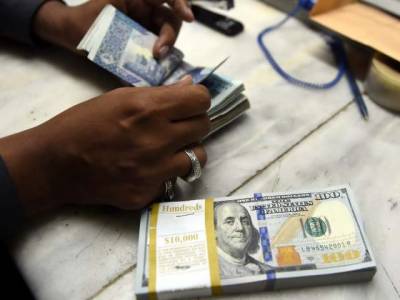KARACHI: The rupee fell against the US dollar in the interbank market on Tuesday, slightly bridging the gap between the rates in the interbank and open markets — the difference between which should not be more than 1.25 percent according to the country’s agreement with the International Monetary Fund (IMF).
The fall in the value of the rupee came on the first day of the new interim government. The sudden fall coming immediately after Anwarul Haq Kakar took over as caretaker prime minister has raised questions regarding whether the interbank rate of the rupee was still being managed by the outgoing PDM government.
Data provided by the State Bank of Pakistan (SBP) showed that the rupee lost Rs 3.02 per dollar to close at Rs 291.51 in the interbank market, down 1.05 percent from the previous close of Rs 288.49. According to Arif Habib Limited, this is the second-lowest level the rupee has fallen to since a record low of Rs 298.93 reached on May 11, 2023.
Meanwhile, the rupee continued to trade above Rs 300 in the open market. This equates to a difference of Rs 8.49 or 2.91 percent. Under the terms of an agreement reached with the IMF for an economic bailout in June, the government has to adhere to a single market-determined rate in both the interbank and open markets, with a maximum difference of 1.25 percent.
As the coalition government bowed out last week without the name of an interim prime minister being finalised, the rupee fell to Rs 302 per dollar in the open market, which analysts attributed to political uncertainty. At the same time, the rate in the interbank market on August 11 was Rs 288.49 — a difference of Rs 13.51.
So, the rupee’s fall in the interbank market is an attempt to narrow that gap. Ismail Iqbal Securities’ Head of Research Fahad Rauf explained that the interbank market had come under pressure because of the open market being on the higher side as the IMF had stipulated the difference in rates could not exceed 1.25 percent for five consecutive business days.
Besides this, the IMF also wanted the exchange rate to be market-determined, which means the government could not intervene to “manage” the rupee by imposing trade restrictions.
Therefore, import restrictions had been lifted leading to a higher demand for the greenback, Sana Tawfik, a senior analyst at Arif Habib Limited, said.
Rauf also said the increase in import payments after restrictions were lifted, and the resulting rise in demand, put pressure on the rupee.




